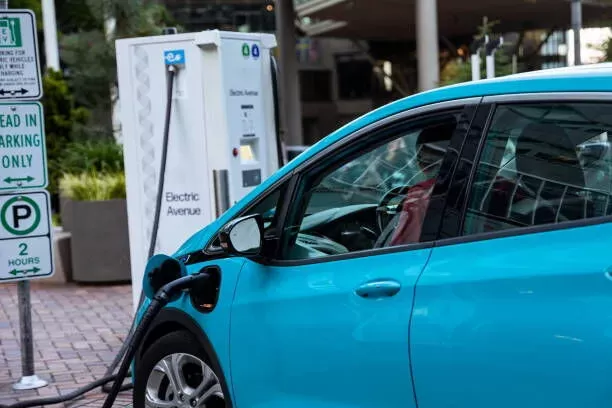Notifications

9 minutes, 21 seconds
-104 Views 0 Comments 0 Likes 0 Reviews

As a professional EV charger manufacturer in China, Topper Company delivers dependable electric vehicle charging station equipment and comprehensive charging solutions.Electric vehicles (EVs) are transforming the automotive industry, offering a cleaner, more sustainable alternative to traditional gasoline-powered cars. One of the key aspects of EV ownership that every driver needs to understand is how charging works, particularly the concept of EV charging curves. These curves are not just technical details; they are central to how your EV charges and significantly impact both charging efficiency and battery lifespan.
An EV charging curve is a graphical representation of how the charging power relates to the battery's state of charge over time. Essentially, it's a unique "fingerprint" of your vehicle’s charging behavior, showing how quickly the battery can accept power at various charge levels. The curve illustrates the balance between the vehicle's battery management system (BMS) and the charging station, revealing how the charging rate adjusts based on battery status and external factors.
In this article, we will explore the concept of EV charging curves, how they affect battery health, and why they are crucial for maximizing the efficiency and longevity of your electric vehicle.
EV charging curves are graphs that display how an electric vehicle’s battery charges over time. The curve shows the rate at which energy is delivered to the battery at different states of charge. Unlike traditional charging, the charging process doesn’t follow a simple linear path. At lower battery levels, the vehicle can accept more power, and as the battery fills up, the rate of charging slows down to prevent overcharging and potential damage to the battery.
This non-linear charging behavior is by design, optimizing the speed of charging without compromising battery health or safety. Understanding these curves helps EV owners make informed decisions on when and where to charge their vehicles for maximum efficiency and battery performance.
Charging curves are critical to maintaining the health and longevity of an EV’s battery. Since the battery is the most expensive component of an EV, its performance directly influences the vehicle’s range, efficiency, and overall value.
Lithium-ion batteries, commonly used in EVs, rely on the movement of ions between the anode and cathode to store energy. Charging too quickly can generate excessive heat, which can degrade the battery over time. This heat accelerates the breakdown of battery cells, reducing both the battery’s capacity and the vehicle’s range.
To prevent this, EV manufacturers incorporate advanced battery management systems (BMS) that carefully control the charging rate. These systems monitor real-time data such as temperature, cell voltage, and internal resistance to ensure that the battery charges at an optimal rate based on its current state of charge and temperature. For example, when charging with a high-power charger, the BMS may initially limit the charging rate to allow the battery to warm up slowly and prevent overheating.
By following the charging curve, the BMS strikes a balance between fast charging and battery protection, maximizing efficiency while safeguarding the battery’s health.
Several factors can affect the shape and behavior of an EV’s charging curve. Understanding these variables can help optimize your charging experience and extend your battery’s lifespan:
Battery Chemistry: Different battery chemistries (e.g., lithium-ion, lithium iron phosphate) have unique voltage and temperature limits, which impact the charging curve.
Charging Infrastructure: The type of charger you use matters. A high-power DC fast charger can deliver power rapidly, but the vehicle’s BMS will regulate the charging rate to protect the battery. Conversely, slower chargers, such as Level 2 AC chargers, deliver power more gradually, resulting in a flatter charging curve.
Ambient Temperature: Temperature plays a significant role in battery performance. In colder temperatures, the BMS may reduce the charging rate to prevent thermal stress, while in hot conditions, the BMS may limit the rate to avoid overheating.
Battery State of Charge: The battery’s state of charge strongly influences the charging curve. When the battery is near empty, it can accept a higher charging rate. As the battery fills up, the charging rate decreases to reduce stress on the cells and prevent overcharging.
The BMS is the central controller that ensures safe, efficient charging of an EV’s battery. It continuously monitors battery parameters such as temperature, cell voltage, and internal resistance to determine the optimal charging rate. If any irregularities are detected, such as overheating or voltage fluctuations, the BMS adjusts or halts the charging process to protect the battery from damage.
Modern BMS technology is what makes EVs reliable and safe. Without it, charging would be less efficient, and the risk of damaging the battery would increase.
Understanding EV charging curves can significantly improve your EV ownership experience. Here are some tips to optimize your charging process:
Use the Right Charger: Choose the appropriate charger based on your needs. High-power DC fast chargers are ideal for long trips where quick recharging is necessary, but for everyday use, a Level 2 AC charger is more than sufficient and gentler on your battery.
Avoid Frequent Fast Charging: While fast charging is convenient, frequent use can contribute to faster battery degradation. Whenever possible, use slower chargers to help preserve battery health.
Monitor Battery Temperature: Extreme temperatures can impact charging efficiency and battery health. In cold conditions, pre-condition your battery before charging to avoid stress. In hot weather, try charging during cooler parts of the day to reduce the risk of overheating.
Follow the Charging Curve: Trust your vehicle’s BMS to manage the charging process. Interrupting the charging cycle can disrupt the curve and lower charging efficiency. Let the system do its job for the best results.
EV charging curves are essential for understanding how electric vehicles charge and how to maximize both charging efficiency and battery longevity. By recognizing the importance of these curves, EV owners can make smarter decisions on when and how to charge, ensuring the health and lifespan of their batteries.
As technology continues to improve, charging curves will continue to evolve, further enhancing the convenience and sustainability of electric vehicles. For both current and prospective EV owners, understanding and respecting these curves is the key to unlocking the full potential of electric mobility. By following best practices and leveraging modern BMS capabilities, you can enjoy a seamless and efficient charging experience while protecting your investment in a greener, more sustainable future.Know more about Google SEO Directory
China EV Chargers EV Charger Manufacturer EV Charging Solutions

